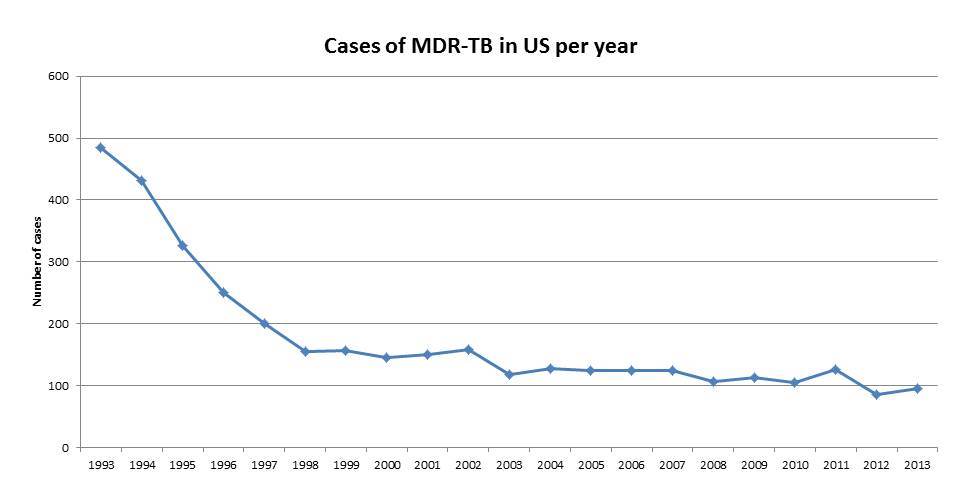Multi-drug-resistant tuberculosis historical perspective
|
Multi-drug-resistant tuberculosis Microchapters |
|
Differentiating Multi-drug-resistant tuberculosis from other Diseases |
|---|
|
Diagnosis |
|
Treatment |
|
Case Studies |
|
Multi-drug-resistant tuberculosis historical perspective On the Web |
|
American Roentgen Ray Society Images of Multi-drug-resistant tuberculosis historical perspective |
|
FDA on Multi-drug-resistant tuberculosis historical perspective |
|
CDC on Multi-drug-resistant tuberculosis historical perspective |
|
Multi-drug-resistant tuberculosis historical perspective in the news |
|
Blogs on Multi-drug-resistant tuberculosis historical perspective |
|
Directions to Hospitals Treating Multi-drug-resistant tuberculosis |
|
Risk calculators and risk factors for Multi-drug-resistant tuberculosis historical perspective |
Editor-In-Chief: C. Michael Gibson, M.S., M.D. [1]; Associate Editor(s)-in-Chief: Alejandro Lemor, M.D. [2]
Overview
Mycobacteria tuberculosis was first described by Robert Koch in 1882 and in 1970 drug-resistant tuberculosis was first reported. Since then, several drugs and strategies have been implemented to control the disease. Cases in US have decreased, however worldwide MDR-TB is increasing in developing countries.
Historical Perspective
- Tuberculosis has been present in humans since antiquity. The earliest unambiguous detection of Mycobacterium tuberculosis was in the remains of bison, dated 18,000 BC.[1]
- However, whether tuberculosis originated in cattle and then transferred to humans, or diverged from a common ancestor, is currently unclear.[2]
- Through history tuberculosis had many names, such as phthisis and Wasting disease, which were mostly derived from its symptoms.
- The rod-shaped bacteria Mycobacterium tuberculosis was only identified in 1882 by Robert Koch.
- In the 19th and early 20th centuries, tuberculosis caused the most widespread public concern, being considered an endemic disease of the urban poor. In 1946, the development of streptomycin made possible the treatment and cure for tuberculosis.
- During the 1970s, a multi-drug resistant mycobacterium tuberculosis was first described. [3]
- In 1990, the DOTS strategy was first introduced by WHO to prevent patient's drop-out from the medical regimen.[4]
- Since 1993 the proportion of patients with primary multidrug-resistant (MDR) TB decreased from 3% to 1% by 1998. [4]
- During 2009 through 2013, the percentage of primary MDR TB cases has remained stable at approximately 1%. [4]
- Since 1997, the percentage of U.S.-born patients with primary MDR TB has remained below 1%. [4]
- However, of the total number of reported primary MDR TB cases, the proportion occurring in foreign-born persons increased from 25% (103 of 407) in 1993 to 92% (75 of 82) in 2013.[4]
- In 2012, an estimated of 450 000 cases of MDR-TB were reported and there were an estimated 170 000 deaths from MDR-TB.[5]
- Also, the WHO reported that 3.6% of newly diagnosed TB cases were drug resistant and 20% of previously treated patients developed multi-drug resistant TB.
 Image from the History of Medicine (NLM) (http://ihm.nlm.nih.gov/images/B16691) |
 |
References
- ↑ Rothschild B, Martin L, Lev G, Bercovier H, Bar-Gal G, Greenblatt C, Donoghue H, Spigelman M, Brittain D (2001). "Mycobacterium tuberculosis complex DNA from an extinct bison dated 17,000 years before the present". Clin Infect Dis. 33 (3): 305–11. PMID 11438894.
- ↑ Pearce-Duvet J (2006). "The origin of human pathogens: evaluating the role of agriculture and domestic animals in the evolution of human disease". Biol Rev Camb Philos Soc. 81 (3): 369–82. PMID 16672105.
- ↑ "CDC Meeting the Challenge of Multidrug-Resistant Tuberculosis: Summary of a Conference 1992".
- ↑ 4.0 4.1 4.2 4.3 4.4 "CDC. Reported Tuberculosis in the United States, 2013. Atlanta, GA: U.S. Department of Health and Human Services, CDC, October 2014" (PDF).
- ↑ "WHO Global Tuberculosis Report 2013".